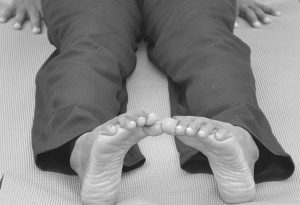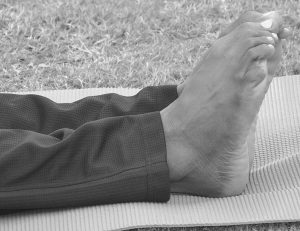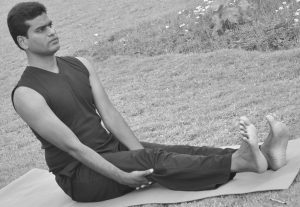
Menu
Close
- Home
- About Us
- Our Team
- What is Karuna Yoga?
- Karuna Yoga
- Dr. S. Karuna Murthy
- Yoga Medical Fitness Certificate
- Accreditation – Yoga Alliance USA
- PROJECT WORK – TTC STUDENT’S
- Yoga Question and Answer
- Karuna Yoga Question Bank
- Yoga PDF Book Free Download – Recommended Book
- asana gallery
- How to Affiliate with Karuna Yoga Vidya Peetham
- KARUNA YOGA VIDYA PEETHAM
- Travel Tips to Bangalore, India
- Review
- How to Register with Yoga Alliance : Step-by-Step Instructions for Teachers
- Managing Committee
- Founder & Director
- Student Assessment – Teacher Training Certificate Course
- How to Register with Yoga Alliance
- FAQ
- Project Work – Guidelines
- Associate Institutions
- Gallery
- Reg.
- Payment Options
- TTC Registration
- Registration Short Course
- Yoga Health Form
- Terms & Conditions
- Admission Process
- Refund & Cancellation Policy
- Grievance Policy – Karuna Yoga Vidya Peetham
- Anti-Harassment/Sexual Misconduct Policy
- Code Of Conduct – Karuna Yoga Vidya Peetham
- Rules and Regulations
- Eligibility Criteria
- Admission Rules and Regulations
- 200 Hr TTC
- ATTC
- Yoga Foundation Certification Course (YFC) Level – 1
- RYT – 300 Hr Yoga ATTC Level – 2
- RYT – 500 Hr Yoga ATTC
- ATTC – 800 Hr Advanced Yoga Teacher Training Certificate Course, Bangalore, India.
- TTC – 100 Hr Yoga Teacher TrainingYUUI
- TTC – 50 Hr
- Yoga Therapy Online/Offline
- Yoga for Anxiety & Depression Course
- Yoga for Digestive System Certificate Course
- Yoga for Arthritis Course
- 50 Hrs – Yoga for Asthma & Respiratory Disorder Teacher Training Certificate Course, Bangalore, India.
- 50 Hrs – Yoga for Hypertension Teacher Training Certificate Course, Bangalore, India.
- 50 Hrs – Yoga for Back Pain Teacher Training Certificate Course, Bangalore, India.
- 50 Hr - Hatha-Vinyasa Yoga TTC
- 50 Hr - Restorative Yoga TTC
- 50 Hr - Vinyasa Yoga TTC
- 50 Hr - Ashtanga Yoga TTC
- 50 Hr - Yin Yoga Teacher TTC
- 50 Hr - Yin Yoga & Meditation TTC
- 50 Hr - Vinyasa-Hatha Yoga TTC
- 50 Hr-Psychotherapeutic TTC
- 50 Hr-Trauma, Depression & Anxiety TTC
- 50 Hr - Somatic Yoga TTC
- 50 Hr - Yoga Mentorship TTC
- 50 Hr-Partner & Couple Yoga TTC
- 50 Hr-Breathwork&Pranayama
- 50 Hr - Yoga Internship TTC
- 50 Hr - Hatha Yoga TTC
- 100 Hr - Yoga Therapist TTC
- 50 Hr - Anxiety & Depression TTC
- 50 Hr - Digestive System TTC
- 50 Hr - Arthritis TTC
- 50 Hr - Asthma TTC
- 50 Hr - Hypertension TTC
- 50 Hr - Back Pain TTC
- 50 Hr - Diabetes Mellitus TTC
- 30 Hr - Mudra Therapy TTC
- 50 Hr- Emotional Management
- 30 Hr - Corporate Yoga TTC
- 50 Hr - Yoga Therapist TTC
- 50 Hr – Yoga Therapy TTC
- 100 Hr - Yoga Threapist TTC
- 100 Hrs – Kids & Teen Yoga TTC
- 100 Hrs – Gentle Yoga TTC
- 100 Hrs - Somatic & Yin Yoga TTC
- 100 Hrs – Yoga Course TTC
- 100 Hrs – Mudra & Bandha TTC
- 100 Hr-Asana, Pranayama, Mudra & Bandha
- 100 Hr - Restorative Yoga TTC
- 100 Hr - Yin Yoga TTC
- 100 Hr - Vinyasa Yoga TTC
- 100 Hr - Hatha-Vinyasa Yoga TTC
- 100 Hr - Hatha Yoga TTC
- ON DEMAND
- Short Term -1
- Beginners Yoga Course
- 30 Hrs – Hatha Yoga Teacher Training Certificate Course, Bangalore, India.
- Yoga Philosophy Course
- 50 Hrs – Yoga Mantra Chanting Certificate Course, Bangalore, India.
- Asana, Pranayama, Mudra, and Bandha Course
- 30 Hrs – Yoga Pranic Energization Technique (PET) Teacher Training Certification Course, Bangalore, India.
- 50 Hrs – Yoga Nidra Teacher Training Certification Course: The Art of Relaxation
- SMET (Self-Management of Excessive Tension) Certificate Course
- 50 Hrs – Meditation Teacher Training Certificate Course, Bangalore, India
- Yoga for Beginner’s Course
- 30 Hr – Trataka & Meditation Teacher Training Certificate Course, Bangalore, India.
- 30 Hrs – Shat-Karma (Detoxification Course) & Pranayama Teacher Training Certification Course, Bangalore, India.
- Yogic Suksma Vyayama
- 50 Hrs – Pranayama, Mudra, Bandha & Meditation Teacher Training Certificate Course, Bangalore, India.
- Yoga, Anatomy & Physiology Course
- 50 Hrs Mantra Chanting
- Mudra & Pranayama Course
- 50 Hrs – Pranayama Teacher Training Certificate Course, Bangalore, India
- 50 Hrs – Mudra Teacher Training Certificate Course, Bangalore, India.
- Pranayama Teacher Training
- Patanjali Yoga Sutra Course
- Advanced Level
- Yoga Class Sequencing Teacher Training
- 50 Hrs – Asana Adjustment & Alignment Yoga Teacher Training Certificate Course, Bangalore, India.
- 30 Hrs Backward Bending and Balancing Asana Certificate Course
- 30 Hrs – Yoga Teaching, Training and Techniques Certificate Course, Bangalore, India.
- Asana and Kinesiology Teacher Training
- 50 Hrs – Yoga Techniques & Teaching Methodology Teacher Training Certificate Course, Bangalore, India.
- Asana and Bio-Mechanism Teacher Training
- 30 Hrs – Asana Alignment & Verbal Cues Teacher Training Certificate Course, Bangalore, India.
- Asana & Alignment Certificate Course
- 50 Hrs – Mudra Yoga TTC
- 50 Hr - Beginner’s Yoga TTC
- 50 Hr - Hatha Yoga TTC
- 30 Hr-Yoga Philosophy Lifestyle TTC
- 50 Hr - Asana, Pranayama, Mudra & Bandha TTC
- 30 Hr-Pranic Energization Technique
- 50 Hr - Yoga Nidra TTC
- 30 Hr - Cylic Meditation TTC
- 30 Hr-Mind Sound Resonance Tech. (MSRT)
- 50 Hr - Meditation & Yoga Nidra TTC
- 30 Hr-Biomechanics & Alignments of Sun Salutations
- 50 Hrs Advanced Mantra Chanting
- 30 Hr-Sanskrit Mantra Chanting TTC
- 50 Hr- Mudra Therapy TTC
- 30 Hr-Trataka & Meditation TTC
- 30 Hr-ShatKarma & Pranayama TTC
- 50 Hr - Yogic Suksma Vyayama TTC
- 50 Hr- Pranayama, Mudra, Bandha & Meditation
- 50 Hr-Yoga, Anatomy & Physiology TTC
- 50 Hr - Mudra & Pranayama TTC
- 50 Hr - Pranayama TTC
- 30 Hr - Patanjali Yoga Sutra TTC
- 50 Hr - Meditation TTC
- 50 Hr-Pranayama & Meditation TTC
- 30 Hr-SMET(Self-Management of Excessive Tension)
- 50 Hr - Anatomy of Yoga Breathing
- 50 Hr -Asana Adjustment Alignment
- 30 Hr-Backward Bending TTC
- 30 Hr-Teaching, Training & Techniques
- 30 Hr - Asana & Kinesiology TTC
- 50 Hr-Techniques&Teaching Methodology
- 30 Hr - Asana & Bio-Mechanism TTC
- 30 Hr- Asana Alignment & Verbal Cues TTC
- 50 Hr - Kinesiology & Yoga TTC
- 50 Hr - Mudra & Mantra Chanting TTC
- 30 Hr - Complete Eye Yoga TTC
- Ashtanga Yoga Sutra Philosophy & Chanting
- Short Term -1
- YACEP
- 50 Hrs – Kriya Pranayama Teacher Training Certificate Course
- 200 Hrs – Hatha-Vinyasa TTC
- 50 Hrs – Senior’s & Geriatric Yoga Teacher Training Certificate Course
- 200 Hrs – Hatha Yoga TTC
- 1OO Hr – Mudra Therapy TTC tripanee
- 1OO Hr – Yoga Nidra & Meditation TTC
- 50 Hrs – Yoga Philosophy, Lifestyle & Ethics Yoga Teacher Training Certificate Course, Bangalore, India.
- 50 Hrs – Yoga Mantra Chanting Certificate Course, Bangalore, India.
- Yoga Life Coach TTC
- 2OO Hr – Week-End TTC
- 100 Hrs – Asana Teacher Training Certificate Course, Bangalore, India.
- Self-Paced 200-Hrs TTC
- 100 Hrs – Pranayama & Meditation TTC
- 100 Hrs – Mudra & Mantra Chanting TTC
- 100 Hrs – Meditation TTC
- 100 Hrs – Mudra & Pranayama TTC
- 100 Hrs – Pranayama Teacher Training Certificate Course, Bangalore, India.
- 100 Hrs – Meditation & Yoga Nidra Teacher Training Certificate Course, Bangalore, India.
- 100 Hrs – Yoga Nidra Teacher Training Certification Course, Bangalore, India
- 100 Hrs – Pranayama, Mudra, Bandha & Meditation Teacher Training Certificate Course, Bangalore, India.
- 100 Hrs – Mudra Teacher Training Certificate Course, Bangalore, India.
- 100 Hr – Hatha Vinyasa & Kids Yoga Teacher Training Course (TTC)
- 100-Hr Hatha Yoga & Mentorship TTC
- 100-Hr Yin Yoga, Anatomy, Physiology, and Kinesiology TTC
- 50 Hrs – Meditation, Yoga Nidra, Breathe Work & Pranayama Teacher Training Certificate Course
- 200Hr – Hatha Yoga and Yoga Therapy Teacher Training Course (TTC)
- 50 Hrs - Yoga for Cancer
- 50 Hr - Breathwork TTC
- 50 Hrs - Kriya Pranayama
- 200 Hrs – Hatha-Vinyasa
- 50 Hr Senior’s & Geriatric TTC
- 200 Hrs - Hatha Yoga TTC
- 200 Hrs - Vinyasa Yoga TTC
- 1OO Hr - Yoga Nidra & Meditation TTC
- 200 Hrs Yin Yoga TTC
- 50 Hrs – Yoga Philosophy, Lifestyle & Ethics
- 100 Hrs - Asana TTC
- Self-Paced 200-Hrs TTC
- 100 Hrs – Pranayama & Meditation TTC
- 100 Hrs – Mudra & Mantra Chanting TTC
- 100 Hrs – Meditation & Yoga Nidra TTC
- 200-Hour Ashtanga, Vinyasa, Anatomy, Physiology & Kinesiology TTC
- Online
- Online Yoga Nidra TTC
- Online Mudra Therapy TTC
- Online Pranayama TTC
- 50 Hrs – Mudra, Mantra Chanting, & Somatic Yoga Teacher Training Course
- Online Meditation TTC
- Online Yin Yoga TTC
- Online Mantra Chanting
- Online Yoga Therapy Teacher Training Certificate Course
- Online Kids Yoga TTC
- Online 200 Hr Yoga TTC
- 50 Hrs – Seniors Yoga Teacher Training – Online/Offline
- 50 Hrs – Yoga for Cancer (Oncology Yoga) Teacher Training Certificate Course: Balancing Immune System
- Breathwork Teacher Training
- Seniors Chair Yoga Teacher Training – Online/Offline
- Retreat
- Yoga PDF Book Free Download
- 50-Hour Online Course: Asana, Pranayama, Mudra, and Bandha – tripanee
- Yoga, Anatomy, and Physiology Teacher Training Certificate Course 50-Hour Online – tripanee
- Yoga, Health and Wellness Retreat in Bangalore
- Yoga and Meditation Retreat in Bangalore
- Yoga Stress Management Retreat in Bangalore
- Yoga Therapy Retreat in Bangalore
- Yoga Retreat in Bangalore
- Yoga Nidra Retreat in Bangalore, India.
- Blog
- Contact
- Chennai
- Mysore
- Pondicherry
- Yoga for Digestive System – tripanee
- Yoga for Diabetes Mellitus Course – trip
- Yoga for Arthritis – tripanee
- Yoga for Respiratory Ailments – tripanee
- Yoga for Back Pain – Tripanee
- Yoga for Hypertension and Heart Diseases – tripanee
- Yoga for Anxiety & Depression – Tripanee
- Yogic Suksma Vyayama – tripanee
- Tripaneer
- Mudra & Bandha Certificate Course
- Patanjali Yoga Sutra Course – Tripanee
- Asana, Pranayama, Mudra, and Bandha – Tripanee
- Kinesiology and Yoga Teacher Training Course – Tripanee
- Yoga Mantra Chanting – Tripanee
- Asana and Bio-Mechanism -tripanee
- Yoga Philosophy Course – tripanee
- Pranayama & Meditation – Tripanee
- Self-Paced Online 200-Hr TTC – Tripaneer
- 200-Hour Online 30 Day Intensive TTC
- 200-Hour Online 20 Day High Intensive Yoga Teacher Training Certificate Course – Tripaneer
- 100 Hr – Yoga Therapy Teacher Training Certificate Course – Level – 1
- 100 Hr – Yoga Therapy Teacher Training Certificate Course – Level – 2
- Online Self-Paced 50 – Yin Yoga Teacher Training Certificate Course – trip
- Online Self-Paced 50 Hr – Restorative Yoga Teacher Training Certificate Course
- 100 Hr – Online Hatha-Vinyasa Yoga
- 100 Hours Online – Vinyasa Yoga
- 100 Hours Offline/Online – Ashtanga Yoga Teacher Training Certificate Course
- 50 Hr Online – Hatha Yoga Teacher Training Course
- Self-paced Online 300-Hour Yoga Teacher Training Certificate Course – trip
- 500 Hr ATTC
- 50 hours Online – Hatha-Vinyasa
- Tripanee Course List
- 10 Hrs- Mudra & Bandha - tripanee
- 12 Hr – Patanjali Yoga Sutra Course – Tripanee
- 10-Hr Asana, Pranayama, Mudra, & Bandha-tripanee
- 10-Hr Kinesiology & Yoga - Tripanee
- 10 Hr Yoga Mantra Chanting-tripanee
- 10 Hr Asana & Bio-Mechanism - tripanee
- 10-Hr Yoga Philosophy - tripanee
- 12 Hr – Pranayama & Meditation-trip
- 50-Hour Online Course: Asana, Pranayama, Mudra, and Bandha – tripanee
- Yoga, Anatomy, and Physiology Teacher Training Certificate Course 50-Hour Online – tripanee
- 200-Hr TTC – Tripaneer
- 200-Hour 30 Day TTC - trip
- 200-Hr 20 Day TTC – Tripaneer
- 100 Hr – Yoga Therapy – Level – 1 trip
- 100 Hr – Yoga Therapy Level – 2 - trip
- 50hr – Yin Yoga - trip
- 50 Hr – Restorative Yoga -trip
- 100 Hr – Hatha-Vinyasa TTC - trip
- 100 Hr Vinyasa Yoga - trip
- 100 Hr – Ashtanga Yoga -trip
- 50 Hr Hatha Yoga -trip
- 300-Hr Yoga TTC – trip
- 500 Hr ATTC-trip
- 50 hr – Hatha-Vinyasa -trip
- Home
- About Us
- Our Team
- What is Karuna Yoga?
- Karuna Yoga
- Dr. S. Karuna Murthy
- Yoga Medical Fitness Certificate
- Accreditation – Yoga Alliance USA
- PROJECT WORK – TTC STUDENT’S
- Yoga Question and Answer
- Karuna Yoga Question Bank
- Yoga PDF Book Free Download – Recommended Book
- asana gallery
- How to Affiliate with Karuna Yoga Vidya Peetham
- KARUNA YOGA VIDYA PEETHAM
- Travel Tips to Bangalore, India
- Review
- How to Register with Yoga Alliance : Step-by-Step Instructions for Teachers
- Managing Committee
- Founder & Director
- Student Assessment – Teacher Training Certificate Course
- How to Register with Yoga Alliance
- FAQ
- Project Work – Guidelines
- Associate Institutions
- Gallery
- Reg.
- Payment Options
- TTC Registration
- Registration Short Course
- Yoga Health Form
- Terms & Conditions
- Admission Process
- Refund & Cancellation Policy
- Grievance Policy – Karuna Yoga Vidya Peetham
- Anti-Harassment/Sexual Misconduct Policy
- Code Of Conduct – Karuna Yoga Vidya Peetham
- Rules and Regulations
- Eligibility Criteria
- Admission Rules and Regulations
- 200 Hr TTC
- ATTC
- Yoga Foundation Certification Course (YFC) Level – 1
- RYT – 300 Hr Yoga ATTC Level – 2
- RYT – 500 Hr Yoga ATTC
- ATTC – 800 Hr Advanced Yoga Teacher Training Certificate Course, Bangalore, India.
- TTC – 100 Hr Yoga Teacher TrainingYUUI
- TTC – 50 Hr
- Yoga Therapy Online/Offline
- Yoga for Anxiety & Depression Course
- Yoga for Digestive System Certificate Course
- Yoga for Arthritis Course
- 50 Hrs – Yoga for Asthma & Respiratory Disorder Teacher Training Certificate Course, Bangalore, India.
- 50 Hrs – Yoga for Hypertension Teacher Training Certificate Course, Bangalore, India.
- 50 Hrs – Yoga for Back Pain Teacher Training Certificate Course, Bangalore, India.
- 50 Hr - Hatha-Vinyasa Yoga TTC
- 50 Hr - Restorative Yoga TTC
- 50 Hr - Vinyasa Yoga TTC
- 50 Hr - Ashtanga Yoga TTC
- 50 Hr - Yin Yoga Teacher TTC
- 50 Hr - Yin Yoga & Meditation TTC
- 50 Hr - Vinyasa-Hatha Yoga TTC
- 50 Hr-Psychotherapeutic TTC
- 50 Hr-Trauma, Depression & Anxiety TTC
- 50 Hr - Somatic Yoga TTC
- 50 Hr - Yoga Mentorship TTC
- 50 Hr-Partner & Couple Yoga TTC
- 50 Hr-Breathwork&Pranayama
- 50 Hr - Yoga Internship TTC
- 50 Hr - Hatha Yoga TTC
- 100 Hr - Yoga Therapist TTC
- 50 Hr - Anxiety & Depression TTC
- 50 Hr - Digestive System TTC
- 50 Hr - Arthritis TTC
- 50 Hr - Asthma TTC
- 50 Hr - Hypertension TTC
- 50 Hr - Back Pain TTC
- 50 Hr - Diabetes Mellitus TTC
- 30 Hr - Mudra Therapy TTC
- 50 Hr- Emotional Management
- 30 Hr - Corporate Yoga TTC
- 50 Hr - Yoga Therapist TTC
- 50 Hr – Yoga Therapy TTC
- 100 Hr - Yoga Threapist TTC
- 100 Hrs – Kids & Teen Yoga TTC
- 100 Hrs – Gentle Yoga TTC
- 100 Hrs - Somatic & Yin Yoga TTC
- 100 Hrs – Yoga Course TTC
- 100 Hrs – Mudra & Bandha TTC
- 100 Hr-Asana, Pranayama, Mudra & Bandha
- 100 Hr - Restorative Yoga TTC
- 100 Hr - Yin Yoga TTC
- 100 Hr - Vinyasa Yoga TTC
- 100 Hr - Hatha-Vinyasa Yoga TTC
- 100 Hr - Hatha Yoga TTC
- ON DEMAND
- Short Term -1
- Beginners Yoga Course
- 30 Hrs – Hatha Yoga Teacher Training Certificate Course, Bangalore, India.
- Yoga Philosophy Course
- 50 Hrs – Yoga Mantra Chanting Certificate Course, Bangalore, India.
- Asana, Pranayama, Mudra, and Bandha Course
- 30 Hrs – Yoga Pranic Energization Technique (PET) Teacher Training Certification Course, Bangalore, India.
- 50 Hrs – Yoga Nidra Teacher Training Certification Course: The Art of Relaxation
- SMET (Self-Management of Excessive Tension) Certificate Course
- 50 Hrs – Meditation Teacher Training Certificate Course, Bangalore, India
- Yoga for Beginner’s Course
- 30 Hr – Trataka & Meditation Teacher Training Certificate Course, Bangalore, India.
- 30 Hrs – Shat-Karma (Detoxification Course) & Pranayama Teacher Training Certification Course, Bangalore, India.
- Yogic Suksma Vyayama
- 50 Hrs – Pranayama, Mudra, Bandha & Meditation Teacher Training Certificate Course, Bangalore, India.
- Yoga, Anatomy & Physiology Course
- 50 Hrs Mantra Chanting
- Mudra & Pranayama Course
- 50 Hrs – Pranayama Teacher Training Certificate Course, Bangalore, India
- 50 Hrs – Mudra Teacher Training Certificate Course, Bangalore, India.
- Pranayama Teacher Training
- Patanjali Yoga Sutra Course
- Advanced Level
- Yoga Class Sequencing Teacher Training
- 50 Hrs – Asana Adjustment & Alignment Yoga Teacher Training Certificate Course, Bangalore, India.
- 30 Hrs Backward Bending and Balancing Asana Certificate Course
- 30 Hrs – Yoga Teaching, Training and Techniques Certificate Course, Bangalore, India.
- Asana and Kinesiology Teacher Training
- 50 Hrs – Yoga Techniques & Teaching Methodology Teacher Training Certificate Course, Bangalore, India.
- Asana and Bio-Mechanism Teacher Training
- 30 Hrs – Asana Alignment & Verbal Cues Teacher Training Certificate Course, Bangalore, India.
- Asana & Alignment Certificate Course
- 50 Hrs – Mudra Yoga TTC
- 50 Hr - Beginner’s Yoga TTC
- 50 Hr - Hatha Yoga TTC
- 30 Hr-Yoga Philosophy Lifestyle TTC
- 50 Hr - Asana, Pranayama, Mudra & Bandha TTC
- 30 Hr-Pranic Energization Technique
- 50 Hr - Yoga Nidra TTC
- 30 Hr - Cylic Meditation TTC
- 30 Hr-Mind Sound Resonance Tech. (MSRT)
- 50 Hr - Meditation & Yoga Nidra TTC
- 30 Hr-Biomechanics & Alignments of Sun Salutations
- 50 Hrs Advanced Mantra Chanting
- 30 Hr-Sanskrit Mantra Chanting TTC
- 50 Hr- Mudra Therapy TTC
- 30 Hr-Trataka & Meditation TTC
- 30 Hr-ShatKarma & Pranayama TTC
- 50 Hr - Yogic Suksma Vyayama TTC
- 50 Hr- Pranayama, Mudra, Bandha & Meditation
- 50 Hr-Yoga, Anatomy & Physiology TTC
- 50 Hr - Mudra & Pranayama TTC
- 50 Hr - Pranayama TTC
- 30 Hr - Patanjali Yoga Sutra TTC
- 50 Hr - Meditation TTC
- 50 Hr-Pranayama & Meditation TTC
- 30 Hr-SMET(Self-Management of Excessive Tension)
- 50 Hr - Anatomy of Yoga Breathing
- 50 Hr -Asana Adjustment Alignment
- 30 Hr-Backward Bending TTC
- 30 Hr-Teaching, Training & Techniques
- 30 Hr - Asana & Kinesiology TTC
- 50 Hr-Techniques&Teaching Methodology
- 30 Hr - Asana & Bio-Mechanism TTC
- 30 Hr- Asana Alignment & Verbal Cues TTC
- 50 Hr - Kinesiology & Yoga TTC
- 50 Hr - Mudra & Mantra Chanting TTC
- 30 Hr - Complete Eye Yoga TTC
- Ashtanga Yoga Sutra Philosophy & Chanting
- Short Term -1
- YACEP
- 50 Hrs – Kriya Pranayama Teacher Training Certificate Course
- 200 Hrs – Hatha-Vinyasa TTC
- 50 Hrs – Senior’s & Geriatric Yoga Teacher Training Certificate Course
- 200 Hrs – Hatha Yoga TTC
- 1OO Hr – Mudra Therapy TTC tripanee
- 1OO Hr – Yoga Nidra & Meditation TTC
- 50 Hrs – Yoga Philosophy, Lifestyle & Ethics Yoga Teacher Training Certificate Course, Bangalore, India.
- 50 Hrs – Yoga Mantra Chanting Certificate Course, Bangalore, India.
- Yoga Life Coach TTC
- 2OO Hr – Week-End TTC
- 100 Hrs – Asana Teacher Training Certificate Course, Bangalore, India.
- Self-Paced 200-Hrs TTC
- 100 Hrs – Pranayama & Meditation TTC
- 100 Hrs – Mudra & Mantra Chanting TTC
- 100 Hrs – Meditation TTC
- 100 Hrs – Mudra & Pranayama TTC
- 100 Hrs – Pranayama Teacher Training Certificate Course, Bangalore, India.
- 100 Hrs – Meditation & Yoga Nidra Teacher Training Certificate Course, Bangalore, India.
- 100 Hrs – Yoga Nidra Teacher Training Certification Course, Bangalore, India
- 100 Hrs – Pranayama, Mudra, Bandha & Meditation Teacher Training Certificate Course, Bangalore, India.
- 100 Hrs – Mudra Teacher Training Certificate Course, Bangalore, India.
- 100 Hr – Hatha Vinyasa & Kids Yoga Teacher Training Course (TTC)
- 100-Hr Hatha Yoga & Mentorship TTC
- 100-Hr Yin Yoga, Anatomy, Physiology, and Kinesiology TTC
- 50 Hrs – Meditation, Yoga Nidra, Breathe Work & Pranayama Teacher Training Certificate Course
- 200Hr – Hatha Yoga and Yoga Therapy Teacher Training Course (TTC)
- 50 Hrs - Yoga for Cancer
- 50 Hr - Breathwork TTC
- 50 Hrs - Kriya Pranayama
- 200 Hrs – Hatha-Vinyasa
- 50 Hr Senior’s & Geriatric TTC
- 200 Hrs - Hatha Yoga TTC
- 200 Hrs - Vinyasa Yoga TTC
- 1OO Hr - Yoga Nidra & Meditation TTC
- 200 Hrs Yin Yoga TTC
- 50 Hrs – Yoga Philosophy, Lifestyle & Ethics
- 100 Hrs - Asana TTC
- Self-Paced 200-Hrs TTC
- 100 Hrs – Pranayama & Meditation TTC
- 100 Hrs – Mudra & Mantra Chanting TTC
- 100 Hrs – Meditation & Yoga Nidra TTC
- 200-Hour Ashtanga, Vinyasa, Anatomy, Physiology & Kinesiology TTC
- Online
- Online Yoga Nidra TTC
- Online Mudra Therapy TTC
- Online Pranayama TTC
- 50 Hrs – Mudra, Mantra Chanting, & Somatic Yoga Teacher Training Course
- Online Meditation TTC
- Online Yin Yoga TTC
- Online Mantra Chanting
- Online Yoga Therapy Teacher Training Certificate Course
- Online Kids Yoga TTC
- Online 200 Hr Yoga TTC
- 50 Hrs – Seniors Yoga Teacher Training – Online/Offline
- 50 Hrs – Yoga for Cancer (Oncology Yoga) Teacher Training Certificate Course: Balancing Immune System
- Breathwork Teacher Training
- Seniors Chair Yoga Teacher Training – Online/Offline
- Retreat
- Yoga PDF Book Free Download
- 50-Hour Online Course: Asana, Pranayama, Mudra, and Bandha – tripanee
- Yoga, Anatomy, and Physiology Teacher Training Certificate Course 50-Hour Online – tripanee
- Yoga, Health and Wellness Retreat in Bangalore
- Yoga and Meditation Retreat in Bangalore
- Yoga Stress Management Retreat in Bangalore
- Yoga Therapy Retreat in Bangalore
- Yoga Retreat in Bangalore
- Yoga Nidra Retreat in Bangalore, India.
- Blog
- Contact
- Chennai
- Mysore
- Pondicherry
- Yoga for Digestive System – tripanee
- Yoga for Diabetes Mellitus Course – trip
- Yoga for Arthritis – tripanee
- Yoga for Respiratory Ailments – tripanee
- Yoga for Back Pain – Tripanee
- Yoga for Hypertension and Heart Diseases – tripanee
- Yoga for Anxiety & Depression – Tripanee
- Yogic Suksma Vyayama – tripanee
- Tripaneer
- Mudra & Bandha Certificate Course
- Patanjali Yoga Sutra Course – Tripanee
- Asana, Pranayama, Mudra, and Bandha – Tripanee
- Kinesiology and Yoga Teacher Training Course – Tripanee
- Yoga Mantra Chanting – Tripanee
- Asana and Bio-Mechanism -tripanee
- Yoga Philosophy Course – tripanee
- Pranayama & Meditation – Tripanee
- Self-Paced Online 200-Hr TTC – Tripaneer
- 200-Hour Online 30 Day Intensive TTC
- 200-Hour Online 20 Day High Intensive Yoga Teacher Training Certificate Course – Tripaneer
- 100 Hr – Yoga Therapy Teacher Training Certificate Course – Level – 1
- 100 Hr – Yoga Therapy Teacher Training Certificate Course – Level – 2
- Online Self-Paced 50 – Yin Yoga Teacher Training Certificate Course – trip
- Online Self-Paced 50 Hr – Restorative Yoga Teacher Training Certificate Course
- 100 Hr – Online Hatha-Vinyasa Yoga
- 100 Hours Online – Vinyasa Yoga
- 100 Hours Offline/Online – Ashtanga Yoga Teacher Training Certificate Course
- 50 Hr Online – Hatha Yoga Teacher Training Course
- Self-paced Online 300-Hour Yoga Teacher Training Certificate Course – trip
- 500 Hr ATTC
- 50 hours Online – Hatha-Vinyasa
- Tripanee Course List
- 10 Hrs- Mudra & Bandha - tripanee
- 12 Hr – Patanjali Yoga Sutra Course – Tripanee
- 10-Hr Asana, Pranayama, Mudra, & Bandha-tripanee
- 10-Hr Kinesiology & Yoga - Tripanee
- 10 Hr Yoga Mantra Chanting-tripanee
- 10 Hr Asana & Bio-Mechanism - tripanee
- 10-Hr Yoga Philosophy - tripanee
- 12 Hr – Pranayama & Meditation-trip
- 50-Hour Online Course: Asana, Pranayama, Mudra, and Bandha – tripanee
- Yoga, Anatomy, and Physiology Teacher Training Certificate Course 50-Hour Online – tripanee
- 200-Hr TTC – Tripaneer
- 200-Hour 30 Day TTC - trip
- 200-Hr 20 Day TTC – Tripaneer
- 100 Hr – Yoga Therapy – Level – 1 trip
- 100 Hr – Yoga Therapy Level – 2 - trip
- 50hr – Yin Yoga - trip
- 50 Hr – Restorative Yoga -trip
- 100 Hr – Hatha-Vinyasa TTC - trip
- 100 Hr Vinyasa Yoga - trip
- 100 Hr – Ashtanga Yoga -trip
- 50 Hr Hatha Yoga -trip
- 300-Hr Yoga TTC – trip
- 500 Hr ATTC-trip
- 50 hr – Hatha-Vinyasa -trip
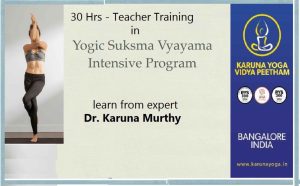
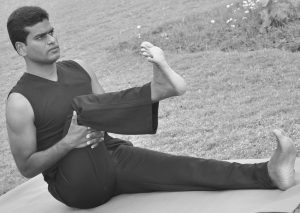
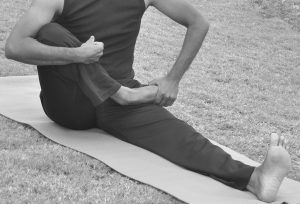
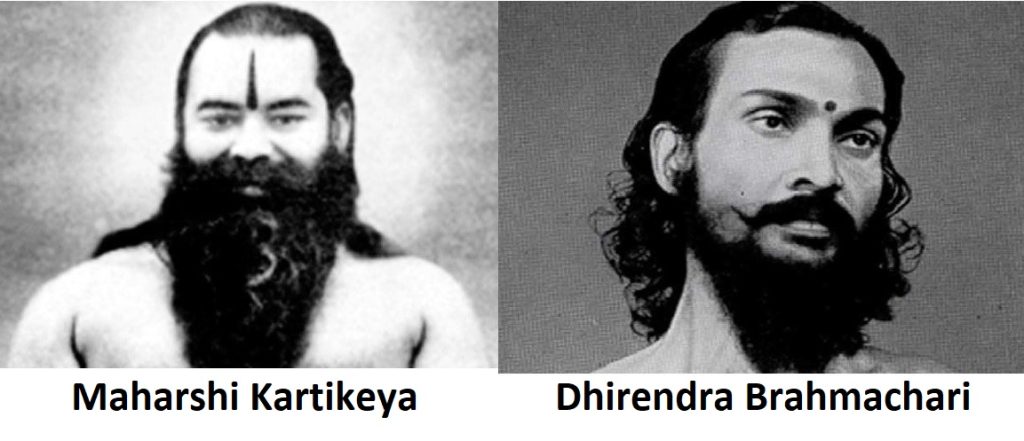 Initiation into Sukshma Vyayama techniques from Maharshi Kartikeya, the prophet and sacred great yogi who was his Master. In the preface to the book “Yogic Sukshma Vyayama” Dhirendra Brahmachari wrote about his precious Guru. Deep knowledge made him the unique expert of human characters, of their abilities and possibilities. From Maharshi Kartikeya, Dhirendra Brahmachari received a precept to spread knowledge about Sukshma Vyayama. The invaluable merit of Dhirendra Brahmachari is that he managed to accumulate knowledge in the convenient form, to make it open and understandable for the audience everywhere. The book “Yogic Sukshma Vyayama” was one of the first books about yoga published in.
Initiation into Sukshma Vyayama techniques from Maharshi Kartikeya, the prophet and sacred great yogi who was his Master. In the preface to the book “Yogic Sukshma Vyayama” Dhirendra Brahmachari wrote about his precious Guru. Deep knowledge made him the unique expert of human characters, of their abilities and possibilities. From Maharshi Kartikeya, Dhirendra Brahmachari received a precept to spread knowledge about Sukshma Vyayama. The invaluable merit of Dhirendra Brahmachari is that he managed to accumulate knowledge in the convenient form, to make it open and understandable for the audience everywhere. The book “Yogic Sukshma Vyayama” was one of the first books about yoga published in.